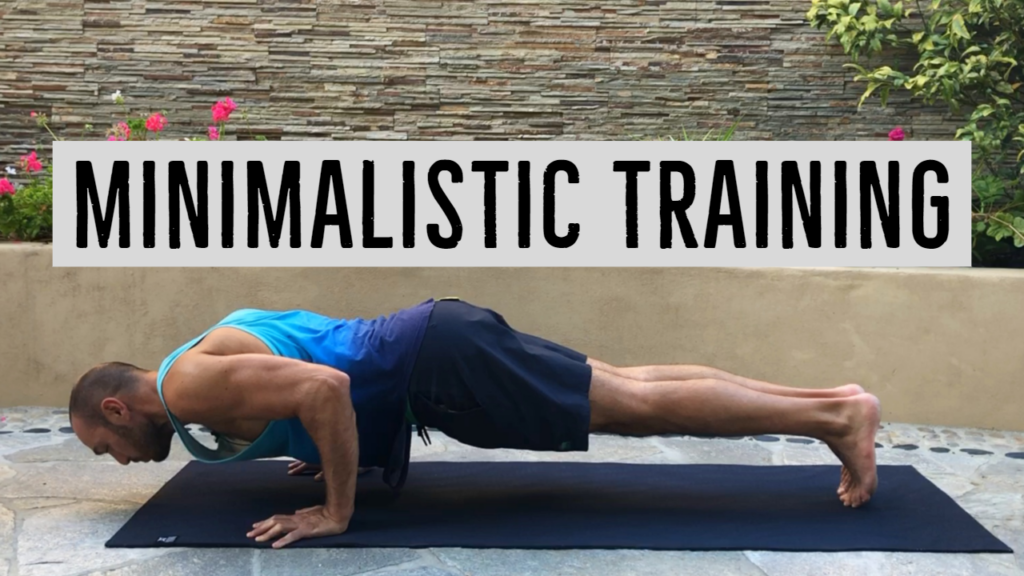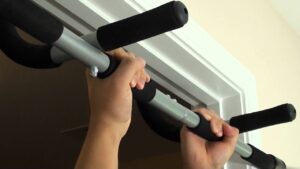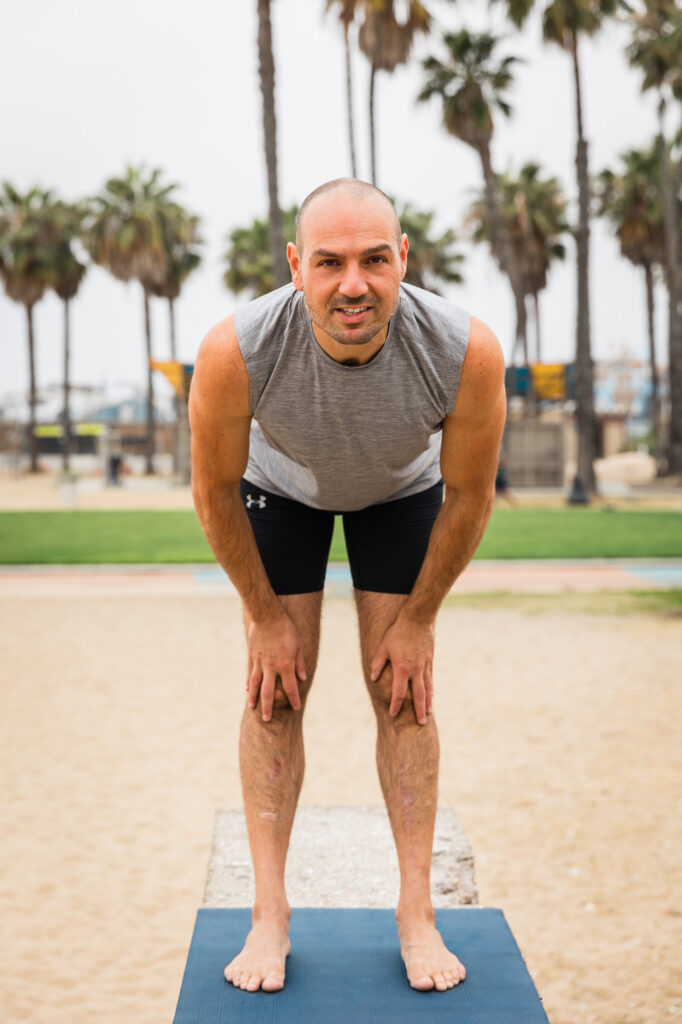The Minimalistic Upper Body Training Program That’s Supremely Easy To Follow And Will Make You Super Strong

The Minimal Upper Body Workout Plan
This program is inspired by and an adaptation of Pavel Tsatsouline’s Fighter Pullup Program. This is the simplest routine that I have found to be extremely effective at strengthening the upper body consistently with minimal time! The structure is also perfect for doing it at home, especially if you work from home and would like to do your sets sprinkled throughout the day because you could rest for however long you want in between sets. But the most important point is that it’s extremely effective at increasing your strength in a very straight-forward and simple manner!
I recommend you start with just one pulling exercise (such as rows or pullups). Then, if you are liking the program and are getting in the groove of things, add a pushing exercise. The reason I suggest you prioritize pulling work, such as pullups, is because it strengthens our upper back which are the muscles that help us maintain proper posture and good shoulder health because it counters the excessive sitting in our modern culture.
- Ring Row Progressions
- Pullup Progressions
- Weighted Pullups
- Mandatory Prerequisite: 3x8reps of proper pullups
- Follow the advice from my blog here
- One Arm Chinup Progression Options
- Not Mandatory But Recommended: 3x8reps of weighted pullups with 50% of bodyweight
- Bar: Towel Assisted One Arm Chinups
- Rings: Mantle Chinups
- One Arm Chin Up Negatives
- Confused what to choose? Pick Pullups.
- If pullups are impossible, do Negative Pullups to unlock them or choose Rows.
- If pullups are too easy, do weighted pullups or one of the exercises from the “one arm chinup progressions.”
- If you want to build straight arm pulling strength, I recommend Front Lever Pulls or Negatives in a shape that you could do 3-reps of to start (Tuck, Advanced Tuck, Single Leg Tuck, etc.)
- Pushup Progressions
- Incline Pushups (Hands Elevated)
- Floor Pushups
- Decline Pushups (Feet Elevated)
- Handstand Pushup Progressions
- Prerequisite: 3×12+reps of Decline Pushups
- Decline Pike Pushups
- Partial ROM Chest-to-Wall Handstand Pushup (Variable)
- Full ROM Chest-to-Wall Handstand Pushup
- Rings Option: Rings-Assisted Handstand Pushups
- Confused what to choose? Pick Pushups.
- If pushups on the floor are impossible, elevate your hands and do Incline Pushups.
- If pushups are too easy, choose Decline Pike Pushups.
You are going to be following a simple descending rep scheme of 4 or 5 sets and you’re adding only one rep to only one set for each workout day. Write this out or print it out and put it somewhere visible in a high traffic area of your home. After you complete the sets and reps for the day, put a check mark next to it. I recommend you also write the date next to each workout day. If you want to add more info, add the rate of perceived effort (RPE) from a scale of 1 to 10 and any other notes on the side margins you wish to include. That will allow you to spot trends. (e.g., RPE stuck at 9 out of 10 might indicate it’s time for a rest day or deload week.) If you want more info on logging, watch this video here.
- 3, 2, 1
- 3, 2, 2
- 3, 3, 2
- 4, 3, 2,
- 4, 3, 2, 1
- 4, 3, 2, 2
- 4, 3, 3, 2
- 4, 4, 3, 2
- 5, 4, 3, 2
- 5, 4, 3, 2, 1
- 5, 4, 3, 2, 2
- 5, 4, 3, 3, 2
- 5, 4, 4, 3, 2
- 5, 5, 4, 3, 2
- 6, 5, 4, 3, 2
- 6, 5, 4, 3, 3
- 6, 5, 4, 4, 3
- 6, 5, 5, 4, 3
- 6, 6, 5, 4, 3
- 7, 6, 5, 4, 3
- 7, 6, 5, 4, 4
- 7, 6, 5, 5, 4
- 7, 6, 6, 5, 4
- 7, 7, 6, 5, 4
- 8, 7, 6, 5, 4
- 8, 7, 6, 5, 5
- 8, 7, 6, 6, 5
- 8, 7, 7, 6, 5
- 8, 8, 7, 6, 5
- 9, 8, 7, 6, 5
- 9, 8, 7, 6, 6
- 9, 8, 7, 7, 6
- 9, 8, 8, 7, 6
- 9, 9, 8, 7, 6
- 10, 9, 8, 7, 6
- At this point you should switch to a harder progression exercise.
- If you want to continue and get to 15 reps, then start adding two reps like this…
- 15, 12, 10, 8, 6, 4
- 15, 12, 10, 8, 6, 6
- 15, 12, 10, 8, 8, 6
- 15, 12, 10, 10, 8, 6
- 15, 12, 12, 10, 8, 6
- Again, at this point you should switch to a harder progression exercise.
- Do this 4-5x/week: If you ignore the rest time between sets, the actual workout itself takes very little time itself, like only 10-20 minutes. The “catch” is that you should do this 4-5x/week. (e.g., Monday to Friday.) You will still progress if you underperform and do it only 3x a week (it’s better than nothing but not optimal) and on another week you might feel so good that you overperform and do 6 days in a row. All roads lead to Rome if you are consistent! The most important thing is you put the work in.
- Rest: You could rest as little as 2 minutes or as long as hours apart. Total volume is king. Nothing else matters. That’s what makes this so simple and stress free and thus, easier to stick to!
Which # of reps to start with?
The first set should be a number that’s slightly less than your maximum ability. So for example, if you could do a maximum of 5 pullups before your form breaks down, then you should start with any of the days that start with 4reps, such as 4, 3, 2, 1 for the first day. Volume builds up fast so start with a very conservative (low) number.
If it’s been a long time since you’ve worked on the exercise and you feel rusty and you want to be on the safe side, start with an even lower number to purposely have more reps in reserve! If you start with too many reps, your body will struggle to recover from it in just 24 hours. Think Rabbit vs. Turtle. The turtle wins. If you are too run down to do the next days workout, then either do the same # of reps as before or regress back a little. You may have to tinker with finding the sweet spot for the first week but then it’s all auto-pilot!
Note: If you’re doing both pullups and pushups, they will have their own independent reps. (e.g., You may be doing 4,3,2,1 pullups but 10,9,8,7,6 pushups!)
If you’re doing one pulling and one pushing exercise, alternate them.
So you’d do one set of pulling and one set of pushing back and forth until you’ve done 4 or 5 sets of each exercise.
What if you can’t complete the # of reps that day?
Maybe rest for a day or 2 and then repeat it again. If you’ve been at it for over 4 weeks, you may need to just take a deload week and then get back into it mega refreshed.
What if I get to 10+ reps of something? What do I do after?
Move onto a harder progression exercise! If you’re unsure what direction to go, contact me and I’ll help steer you in the right direction! I also offer online-coaching.
What about lower body?
If you want to keep it short and simple, you could choose one pulling exercise and one lower body exercise if you prefer to do something like squats. I recommend split squats, especially if you have some dumbbells at home. Personally I mainly train my legs through cardio (hiking, bicycling, running/sprinting, skiing in the winter, sports like soccer/ultimate frisbee and so on).
What about other things? Like flexibility, mobility, cardio, yoga?
With such a simple, minimal routine, even after 5 sets, you shouldn’t feel too tired and since you’re purposely always maintaining “reps in reserve,” recovery is quite fast. As a result, you could totally do anything else like cardio or have a yoga session on the same day or anytime!
But I don’t have a pullup bar at home!

No excuses for this one. It is of my strong opinion that every household needs a place to hang from for optimal health, and a nice space to lay down on the floor to stretch and relax.
- Get a doorway pullup bar like the one pictured above.
- If you don’t trust your door frame, then install this pull up bar that gets screwed in between your frame and it’ll be super solid.
- If you don’t want to screw anything in any door or hang a bar from any door, then maybe the pull up mate is right for you.
And that’s it! Remember to keep a log and everytime you look back at it you will be amazed at how far you’ve come in such little time! The key here is to stick to it! With just one extra rep per workout session, you’ll be surprised at how rapidly the numbers go up and I guarantee it will be quite motivating.

Let’s Connect
The best way to stay up to date with the latest content and videos is to sign up for my newsletter!





